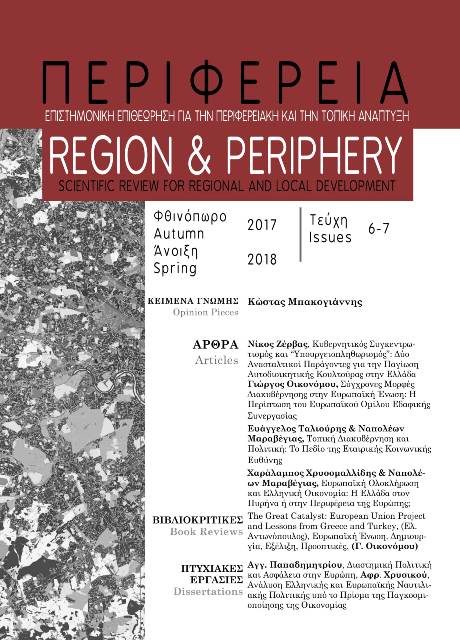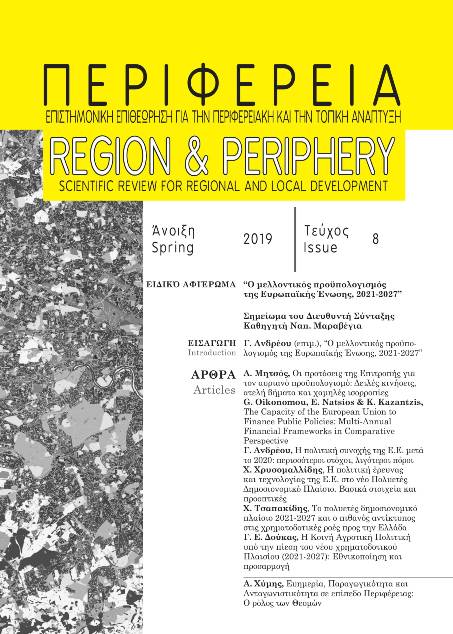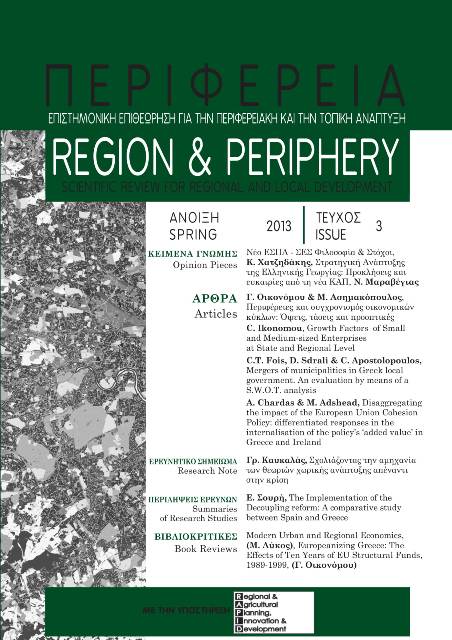Σύγχρονες Μορφές Διακυβέρνησης στην Ευρωπαϊκή Ένωση: Η Περίπτωση του Ευρωπαϊκού Ομίλου Εδαφικής Συνεργασίας

Περίληψη
H διαδικασία ευρωπαϊκής ολοκλήρωσης ευνοεί την ανάδυση νέων μορφών διακυβέρνησης στον ευρωπαϊκό χώρο, επιτρέποντας ταυτόχρονα την ανάπτυξη υποεθνικής κινητοποίησης. Ο Ευρωπαϊκός Όμιλος Εδαφικής Συνεργασίας (ΕΟΕΣ) συγκροτεί θεσμική μορφή διασυνοριακής, διακρατικής και διαπεριφερειακής συνεργασίας με απώτερο σκοπό την ενίσχυση της κοινωνικής, οικονομικής και εδαφικής συνοχής. Το παρόν άρθρο εστιάζει στους ΕΟΕΣ ως σύγχρονη μορφή πολυεπίπεδης διακυβέρνησης.
Υποστηρίζεται ότι τα κίνητρα συμμετοχής σε ΕΟΕΣ λειτουργούν ως αναγκαία συνθήκη προσέλκυσης μελών, αλλά όχι και ικανή δεδομένης της ύπαρξης μεσολαβητικών παραγόντων που επηρεάζουν την υποεθνική κινητοποίηση.
Λεπτομέρειες άρθρου
- Πώς να δημιουργήσετε Αναφορές
-
Οικονόμου Γ. (2018). Σύγχρονες Μορφές Διακυβέρνησης στην Ευρωπαϊκή Ένωση: Η Περίπτωση του Ευρωπαϊκού Ομίλου Εδαφικής Συνεργασίας. Περιφέρεια | Regional Integration: Politics, Economics, Governance, (6-7), 29–45. https://doi.org/10.12681/rp.17005
- Ενότητα
- Ερευνητικά Άρθρα

Αυτή η εργασία είναι αδειοδοτημένη υπό το CC Αναφορά Δημιουργού – Μη Εμπορική Χρήση 4.0.
Οι συγγραφείς των άρθρων που δημοσιεύονται στο περιοδικό διατηρούν τα δικαιώματα πνευματικής ιδιοκτησίας επί των άρθρων τους, δίνοντας στο περιοδικό το δικαίωμα της πρώτης δημοσίευσης.
Άρθρα που δημοσιεύονται στο περιοδικό διατίθενται με άδεια Creative Commons 4.0 Non Commercial και σύμφωνα με την άδεια μπορούν να χρησιμοποιούνται ελεύθερα, με αναφορά στο/στη συγγραφέα και στην πρώτη δημοσίευση για μη κερδοσκοπικούς σκοπούς.
Οι συγγραφείς μπορούν να καταθέσουν το άρθρο σε ιδρυματικό ή άλλο αποθετήριο ή/και να το δημοσιεύσουν σε άλλη έκδοση, με υποχρεωτική την αναφορά πρώτης δημοσίευσης στο περιοδικό Περιφέρεια.
Οι συγγραφείς ενθαρρύνονται να καταθέσουν σε αποθετήριο ή να δημοσιεύσουν την εργασία τους στο διαδίκτυο πριν ή κατά τη διαδικασία υποβολής και αξιολόγησής της.




